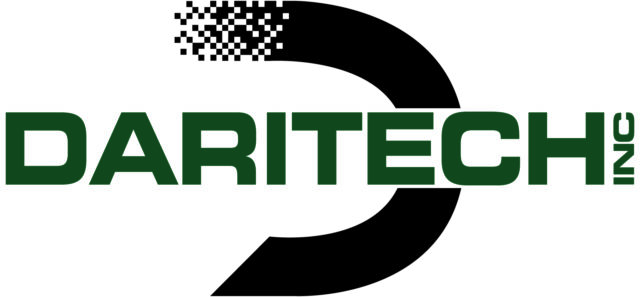Originally conceived as a cement pump, the hose pump is fast becoming the technology of choice for transferring abrasive dairy waste like sand-laden manure.
In 1971, engineers at Holland-based Bredel (now Watson-Marlow Bredel Pumps) were busy developing a machine to spray a cement mixture. When the time came to put a positive displacement pump in the new device to move the concrete, company engineers were underwhelmed by the choices in the marketplace. Consequently, the decision was made to internally create a brand new pump – one that could effectively pump the concrete through the machine and also tolerate the material’s abrasive properties. This cement pump worked so well that it spawned new research and development at the company that ultimately yielded longer hose life, broader flow ranges and greater chemical compatibility. It was not long before the hose pump transformed from a purpose-built cement pump into the technology it is today – a solution for pump users looking to increase productivity and minimize their life cycle costs when moving abrasive fluids.
When it comes to handling abrasive materials, hose pumps deliver an advantage from both a performance and financial perspective. Before we consider the issues inherent to pumping abrasive materials, it is beneficial to recognize and understand the differences in the various types of pumps.
Positive displacement pumps
Unlike constant speed centrifugal pumps, which predominantly find use in transferring thin nonabrasive fluids, positive displacement pumps (PD pumps) were created to meter or transfer hard-to-handle fluids like corrosive, viscous, shear sensitive, or abrasive slurries at various speeds without pressure – induced flow drop. Within the realm of PD pumps, there are reciprocating and rotary pump technologies: diaphragm pumps, which are the most commonly used reciprocating pumps, and progressive cavity pumps, which are commonly used rotating pumps. Other PD technologies include gear pumps, piston pumps and rotary lobe pumps. Hose pumps are a classification of peristaltic pumps, rotary style PD pumps that take their name from the biological process of peristalsis: muscular contractions that move mixed phase fluids (solids, liquids, gases) throughout the digestive system.
Although PD pump technologies differ, all positive displacement pumps incorporate moving parts that come in contact with the material being processed, a reality critical to life cycle costs when pumping an abrasive fluid. For example, diaphragm pumps (typically air-operated or electro-hydraulic) use a reciprocating diaphragm to induce flow between two internal ball check valves. Abrasive fluids inevitably cause erosion or clogging of the valves, requiring frequent rebuilds of the pump’s wetted end. Progressive cavity pumps move fluid along the successive cavities formed between the meshing of a fixed stator and rotating rotor. Erosion from abrasive fluids widens clearances between the rotor and stator, causing internal slip which requires the user to speed up the pump in order to maintain capacity, accelerating wear until rotor and stator need to be replaced (normally four stators to every rotor replacement). With many PD pumps, abrasive fluids can cause problems beyond the normal wetted end of the pump. For example, on a progressive cavity pump it is only a matter of time until the universal joint (gear or pin type) seals fail, allowing abrasive slurry to erode the numerous parts within each joint, including the ends of the connecting rod.
The negative ramifications of wear on common PD pumps from abrasion cannot be overstated. When repairing a progressive cavity pump, for instance, it is necessary to disassemble the entire apparatus, replace the stator and sometimes the rotor as well – a repair cost that often represents over 75 percent of the initial purchase price of the pump. This does not take into account the lack of productivity that results from significant downtime, since the complexity of a progressive cavity pump normally requires the pump to be removed from the installation site for service in a maintenance shop.
The hose pump difference
Hose pumps are unique in that there are no seals, valves or moving parts in the product stream, making the pump ideal for abrasive slurries. The pump’s operation is elegantly simple: a hose element positioned along stationary pump housing is compressed from the outside by shoes mounted to a rotor. Fluid is pushed towards the discharge as the rotor slides the shoes along the hose element while the restitution of the hose element behind the shoe allows more fluid to be drawn into the pump. This design means the abrasive fluid is completely contained within the hose element; the rotor remains outside the pumpage zone and never actually touches the product being moved. The complete closure of the hose element gives the pump its positive displacement action, preventing flow drop or erosion from backflow and also eliminating the need for check-valves.
A hose element has a serviceable life before fatigue requires replacement – it is predominantly dependent on the pump speed and compression forces on the hose element, but not influenced by the abrasiveness of the fluid pumped. With pumps that can deliver a range of 0.005 to 400 gpm and 0 to 240 psi discharge pressure, hose pump manufacturers will typically size pumps to run at speeds to deliver thousands of hours of hose life. High-quality hose pump manufacturers machine their hoses to maintain tight tolerances and utilize adjustable shoes to set the perfect compression force for specific process conditions. Such steps optimize hose longevity, maintain flow stability over the life of the hose, eliminate the potential for abrasion wear from slip and ensure repeatable performance from hose to hose.
The stark contrast in maintenance and installation simplicity versus other PD pumps shows why hose pumps offer the lowest cost of ownership in abrasive applications. While initial capital cost of a hose pump can be higher than other positive displacement pumps (a typical hose pump may cost about $14,000, while a progressive cavity of equal capacity costs $12,000), the subsequent costs associated with repair, downtime, and ancillary items quickly tip the life cycle cost calculation in favor of the hose pump. Hose element replacement on the largest hose pump models takes about one hour and is performed at the installation site. To replace a hose element, simply remove the flanges from the pump and jog the motor to expel the old hose and feed in a new one. Replacement hose elements costs are approximately 5 percent of initial pump price, compared with progressive cavity pumps where wetted end replacement parts cost 75 percent of the pump’s price and are laborious to replace.
Peristaltic pumps also do not require the ancillary equipment commonly used with a progressive cavity pump in abrasive applications, such as double mechanical seals, seal water flush systems, run dry protection systems (hose pumps can run dry without damage) and in-line check valves. For ancillary equipment, a hose pump may require a pulsation dampener in installations with long pipe runs and very high fluid velocities; however, normally, pulsation is eliminated without a dampener through minor pipe changes or use of flexible lines.
Abrasive sand manure
Sand is the ultimate bedding for dairy cow health. Sand provides a healthy environment for the udder and aids in traction on slick concrete. The use of sand as a bedding material coincides with improvements in and increased use of freestalls for dairy housing. Sand provides greater cushion and surface drainage than other materials to enhance stall use and cow cleanliness. Many veterinarians recommend sand bedding to reduce mastitis risk and maintain foot and leg health. So the many benefits of sand are obvious, as long as you can overcome the considerable damage sand can cause to pumping equipment due to its abrasive nature.
New alternatives for handling sand-laden manure differ primarily in length of storage, level of dilution and requirements for labor and equipment. Whether you are using “skim off water and haul solids method,” “trench and haul solids method,” “stir-up a slurry and pump method,” “fully agitate and pump out slurry method,” or have a multi-stage system, you need a pump that can handle the viscous nature of the manure and the abrasive nature of the sand; the hose pump handles both. The sand in the manure does not affect hose life. In addition, in most systems you want to minimize dilution water as much as possible, as hauling water can get expensive. The hose pump handles the viscous manure with little or no dilution needed.
Another common application for hose pumps is transfer of the sand-laden manure into a sand-manure separator. This allows the dairy farmer to recycle the sand and utilize the manure to fertilize his fields.
Hose pump use
Despite these advantages, hose pumps represent a modest percentage of the positive displacement market in the U.S. This is primarily because peristaltic technology is relatively new in the U.S. market, whereas diaphragm and progressive cavity pumps have a lengthy history. The functionality and benefits of peristaltic hose pumps are becoming more widely known, making peristaltic hose pumps the fastest-growing pump type in North America. PD
References omitted but are available upon request by e-mailing editor@progressivedairy.com.
—Submitted by Watson-Marlow Bredel Pumps



